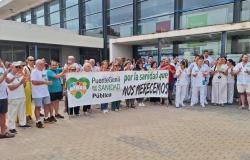The coordinator of the departmental victims’ table, Edna Rocío Pinto, warned about the increase in threats and the risk of displacement faced by six social leaders in Huila. Threats that persist, generating a climate of fear in communities.
DIARIO DEL HUILA, CLOSE UP
Edna Rocío Pinto, coordinator of the departmental victims’ table, has raised her voice to denounce a worrying situation in the department of Huila: the increase in threats and the risk of displacement faced by six social and community leaders in the region.
Pinto has highlighted that, despite the efforts of the Public Force, threats persist and intensify, although official reports do not properly reflect this situation. This lack of adequate registration is largely attributed to the fear and reluctance of the population to report due to the constant vulnerability in which they live, especially in rural areas.
The coordinator of the departmental victims’ table expressed her concern about the absence of guarantees of non-repetition in the department, emphasizing that the silence imposed by fear is nothing more than a reflection of the lack of security and confidentiality for those who decide to speak out. voice.
They have identified the six threatened leaders, but so far they have not formalized the complaints for fear of reprisals. “At this time I am aware that there are six threatened leaders in Huila. They have told me that they have not reported it to the department authorities and that they do not plan to do so either. They approached me because they see in me, as a spokesperson for victims, that voice that can bring their complaint to national entities,” said victim representative Edna Rocío Pinto.
Pinto has revealed an alarming pattern in terms of the origin of the threats: individuals posing as members of the FARC dissidents are summoning leaders to meetings. These clandestine meetings are taking place in various villages in the municipalities of Algeciras, Garzón, Pitalito, Isnos and San Agustín, sowing fear among the communities and generating an atmosphere of uncertainty and danger.
According to what was expressed by the spokesperson for victims of the armed conflict, the leaders who have received threats “have not reported to the authorities in Huila because, according to them, there are no guarantees of confidentiality. “They have told me that they have been summoned to participate in some meetings that they are holding in some villages and the people who summon them identify themselves as members of the FARC dissidents.”
Given this situation, the coordinator of the departmental victims’ table has urged the authorities to take urgent measures to protect the integrity of the threatened leaders and guarantee a safe environment for the exercise of their work in favor of the most vulnerable communities in Huila.
A worrying figure
Since the signing of the Peace Agreement in Colombia, a chilling wave of violence has claimed the lives of 37 social leaders in the department of Huila, according to a report from the Human Rights and Conflict Observatory of the Institute of Peace Studies – Indepaz.
Most alarming is that 97% of the victims of these homicides were men, highlighting a worrying gender trend in these crimes. The observatory developed a viewer that details the homicide figures of social leaders since the signing of the historic peace agreement in the country.
This viewer, a crucial tool to understand the magnitude of this crisis, allows you to filter the data by years, sectors, sex, municipalities and departments. When specifically analyzing the panorama in the department of Huila, it is evident that the year 2020 was the deadliest, with eleven homicides recorded. In contrast, 2017 had the lowest number of deaths, with only one case reported.
Regarding the type of leadership, the following figures stand out: community leaders, peasant leaders and communal leaders represent the majority of the victims, followed by indigenous leaders, political leaders and public servants. Among the victims were three women and 33 men.
The murdered leaders represented a wide range of leaderships, including environmental, peasant, community, cultural, indigenous, LGTBI leaders, politicians, public servants, and members of victim populations.
This report details the names of the victims and their roles in the community, highlighting the sacrifice of people like Marcelina Canacué, Luis Gerardo Ochoa Sánchez, Gabriel Muñoz, and many others who lost their lives defending human rights, the environment and justice. social.
This tragic count of lost lives spans from 2016 to 2023, with names like Humberto Díaz Tierradentro, Jairo Ortiz, Mireya Hernández Guevara, and Juan David Chávez, among others, marked by the violence that continues to ravage the region.
In the face of this growing crisis, according to Indepaz, civil society and local and national authorities must join together in a concerted effort to address the underlying causes of this violence and ensure the protection of social leaders and bring those responsible to justice. Only in this way can the legacy of those who have sacrificed their lives in the pursuit of a more just and peaceful country be properly honored.
The increase in violence against social leaders is a growing concern in the department of Huila and throughout Colombia. Human rights organizations and the community in general demand strong actions by the authorities to protect these leaders and guarantee a safe environment for their work in building peace and social justice.






